Friedrichshain: Holzmarktstraße
LANGHOF®
A Liveable Garden
In recent decades, nature has been systematically pushed out of our cities. The reasons for this are numerous and diverse, and they have evolved over time. As a result, many people have moved, either voluntarily or involuntarily, to the surrounding countryside. Those who have remained in the city are increasingly dissatisfied, as neighbourhoods are becoming worse. They become more and more congested, noisy and hot, losing their sense of community, which amounts to a significantly reduced quality of life on offer. It is therefore only logical to try to return nature to our cities. What if gardens, parks, urban forests were at the centre of our thinking and planning and we instead let streets and buildings develop around them? This could be the basis for Berlin’s ecological transformation. Let’s start this “experiment” at Holzmarkt in Friedrichshain, right in front of Ostbahnhof, and create an urban garden there - a real-life laboratory for a CO2-neutral city.
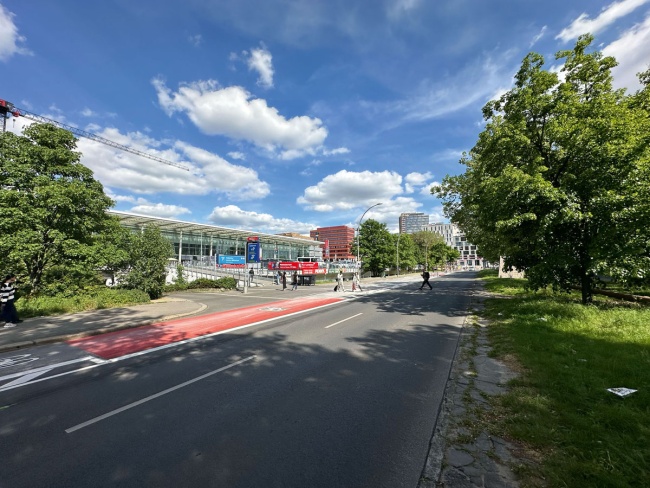
The existing streetscape
Today, Holzmarktstrasse, with its two lanes of traffic moving in both directions, is a noisy, unattractive thoroughfare with no character or atmosphere.
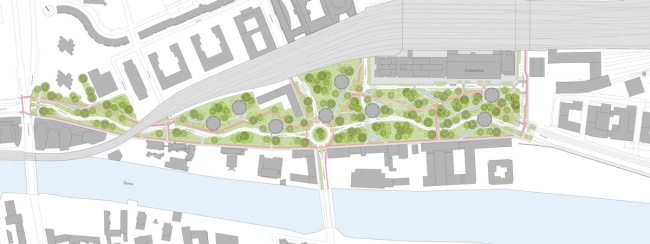
Site plan
The Holzmarktgarten should not only serve as a place of recreation, but as a meeting place and community hub, where visitors can enjoy nature whilst remaining part of a lively urban environment. As illustrated in the site plan, car and cycle lanes are arranged in a free-form organic way. The paths meander through the landscape and blend into the natural surroundings, creating a seamless interplay between urban and natural elements.
Bird’s eye view
The site of the future Holzmartktgarten extends from the Holzmarktstrasse/Michaelbrücke intersection parallel to the Spree to Stralauer Platz, creating a new, inviting entrance to Ostbahnhof station.
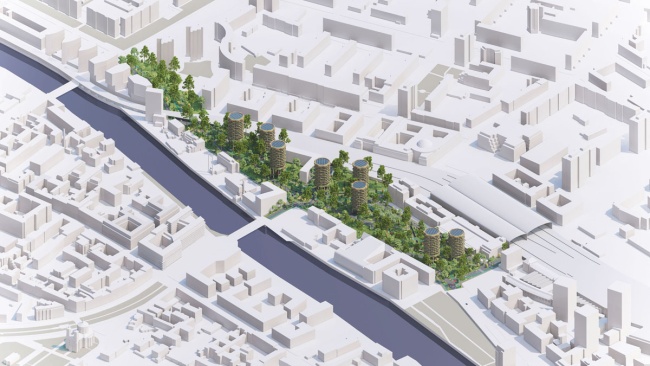
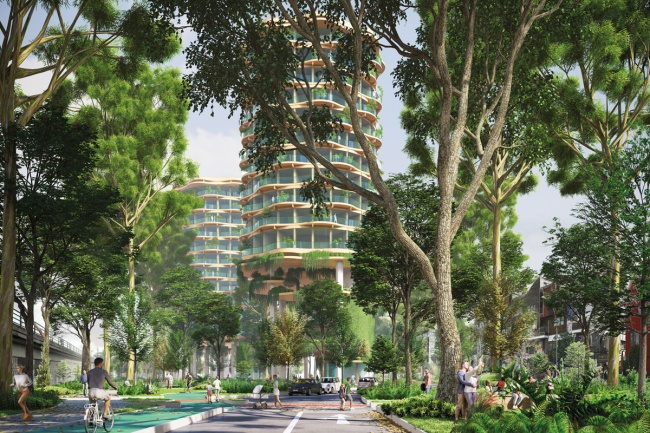
Holzmarktgarten, view to the east
Residential buildings are dotted between the trees and bushes, built using a timber hybrid construction method. They rest on supports of varying heights, allowing a clear line of sight between the trees and bushes.

Holzmarktgarten, view towards Ostbahnhof
The entire area comprising the left and right sides of Holzmarktstrasse and Stralauer Platz has been transformed into an urban garden. In this verdant space, car and cycle lanes have been arranged in a free-form organic way. Ostbahnhof railway station can be seen in the background of the picture on the left.
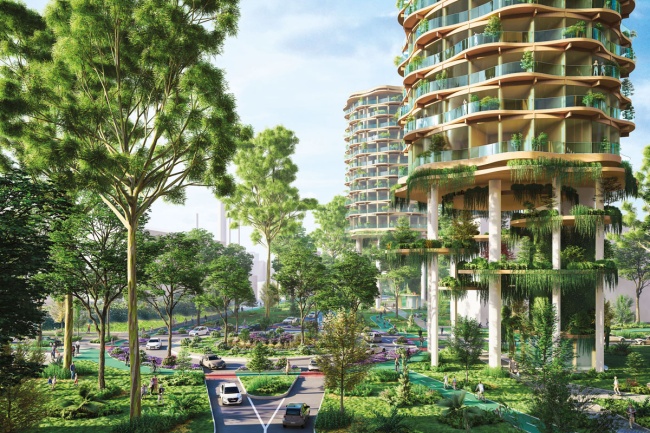
The intersection of Andreasstrasse and Holzmarktstrasse
In the foreground of the picture, between the trees and bushes are a roundabout and separate lanes for cars and bicycles. The buildings are up to 60 metres tall and are designed for residential use.
A view of the Holzmarktgarten
The landscape is punctuated with buildings built on supports, appearing through the trees and bushes. The raised structures create space for flora and fauna to develop undisturbed, while offering views of the landscape.
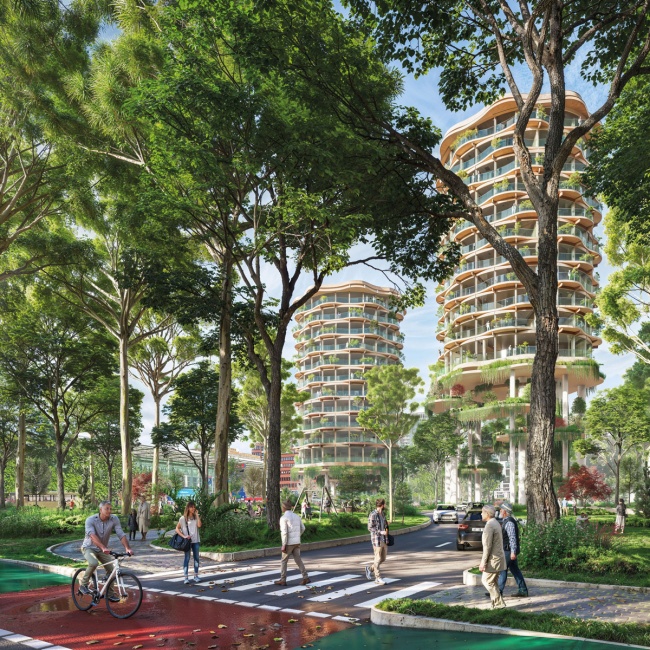
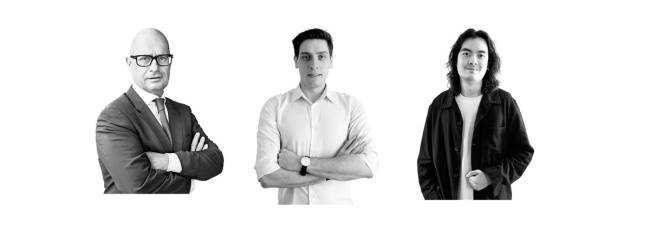
© LANGHOF®
The team
LANGHOF® is an architecture, urban planning and property marketing firm. Their works have twice been presented at the Venice Biennale and they were awarded the 1st Berlin Architecture Prize. The Holzmarktgarten design was created with the help of traffic consulting from Hoffmann-Leichter Ingenieurgesellschaft mbH.